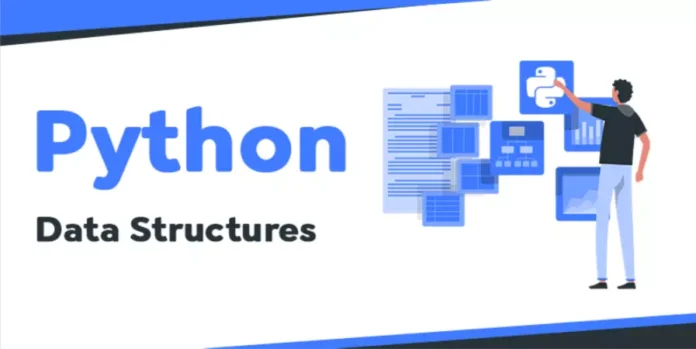Python is a buzzword in the computer programming field. Python is the most in-demand encyclopedically used programming language used nowadays. Python as a language has grown so much and not only this but it has changed the ways of coding. It is considered to be the trouble-free programming language one can use for coding.
Coders, to stay up to date with the trend, need to learn Python Programming. It will not only make their programming and coding effective but efficient. Are you a coder who is looking for a basic to pro level python course? Here we are with our Python Programming Course
Enroll and book your seats now at Intellipaat
Python is a language with a number of Data Structures and in this article, we will take you in-depth into these data structures and help you enhance your knowledge. Wondering what are data structures and what is their role in Python Programming? So to clear all your doubts it’s time to dive in.
Here are the agenda points that are covered in this blog. Let’s begin with them now.
- Discussing Data Structures
- Let’s get to Data Structures in Python
Discussing Data Structures
The word data structures consist of two words, that are, data and structures.
The data is structured using a data structure. It is a repository that arranges and keeps information in such a way that the programmer may access it quickly.
Programmers and coders work with enormous volumes of data in the real world. When the data is organized properly, the programmer can easily analyze and use it. In addition to structuring the information, data structures facilitate processing and access.
A data structure is a preset format used in computer programming to store, read, and process data in a software program effectively. Several data structures are built-in to programming languages, while others might need a library or module to be included before they can be used.
One of the most crucial aspects of creating a computer program is choosing the data structures to utilize and how to use them.
In computer programming and computing, a data structure can sometimes be chosen or created to store data in order to be used with different methods. In certain circumstances, the fundamental operations of the algorithm and the design of the data structure are closely related. Every data structure includes details about the datasets, connections between the data, and, in certain situations, functions that may be used to manipulate the data.
For instance, a class declaration in an object-oriented programming language ties the data structure and the methods connected to it together. Although functions may be created in non-object-oriented languages to interact further with data structure, they are not considered to be a part of the data model.
Data Structures in Python
One of the most basic concepts in every programming language is data structure. Python data structures may be roughly classified into two kinds.
Dictionaries, Lists, tuples, and sets are the four (generic) data structures that are included with Python. In addition to these, user-defined data structures in Python include queues, stacks, trees, linked lists, graphs, and hash maps. Let’s go over the various Python data structure types in general discussion.
The built-in data structures in Python and user-defined data structures in Python can be generally classified into two groups, as we’ve already described. Python uses the following data structures:
Dictionary in Python – A built-in data structure in Python that stores data as key-value pairs is the dictionary. The “key” property is present in Python’s dictionary data structures. The key is indeed the characteristic that enables us to find the information or value in memory. Python’s dictionary offers a huge selection of functions and methods. Within a dictionary, the keys are consistently distinct. The Python dictionary’s values could or might not be singular.
Python’s list syntax– A built-in data structure in Python called Lists is used to store data in a sequential format. Lists are comparable to dynamic arrays. Given that each member is uniquely identifiable by a number or position called an index, a list in Python data structures can include duplicate elements. The lists in Python offer a wide range of functions and methods.
Sets in Python– A set is a group of unsorted values or things. The characteristics of a set in mathematics and Python are comparable. A set in Python offers a huge selection of functions and methods. In Python, a set is created with the set() function. We can include values of heterogeneous types inside the sets.
Tuple in Python – A tuple is another type of built-in data structure in Python that resembles lists in certain ways. An immutable object called a tuple store the members in a certain sequence. The tuple’s elements and the tuple itself cannot be changed once it has been assigned, but the list’s items may be changed since they are changeable. Python’s tuple object offers a wide range of operations and methods.
User Defined Data Types
Now is the time to jump to the second category which is User-defined data types.
Stack in Data Structures: In Python, a stack is not a built-in data structure. In Python, stacks are user-defined data structures that are employed to store data in a Last In First Out (LIFO) fashion. The addition and deletion of items in stacks are accomplished at one end, which is typically referred to as the top. The stack data structure in Python is also referred to as the Last Come First Served data structure because it serves and removes the most recent element first.
Queue-Python’s queue data structure is not one of the built-in data structures. First In First Out (FIFO) data storage is accomplished in Python using the queue, a user-defined data structure. Insertion and deletion in queues are carried out at opposing ends, with insertion taking place at the back and deletion at the front. Therefore, the first data to be withdrawn from the queue will be that which is inserted initially.
Tree-based data Structure – A tree is also not one of Python’s built-in data structures. A tress is a grouping of nodes, which are various kinds of objects, components, or things. To illustrate a hierarchy, these nodes are connected to one another.
Linked List – In Python, a Linked List is not a pre-built data structure either. A linked list is just a node-based linear data structure. A linked list’s nodes each include references (pointers to addresses) to the nodes after them in addition to containing some data.
Graph data structures– Graph data structures are also not included in Python’s built-in data structures. A graph, which consists of nodes linked to other nodes in the graph, is a non-linear data structure. Vertex is another name for the graph node (V). Any place, port, home, building, landmark, etc. may all be represented by a node.
HashMaps – Python does not come with any built-in data structures for hashmaps. A hash table is another name for a hashmap. One of the Python data structures that associate keys with value pairs is the hashmap. While hashmaps employ a function to determine the index score that stores or retains the items to be searched, dictionaries also store key-value pairs, hence the two are relatively comparable.















